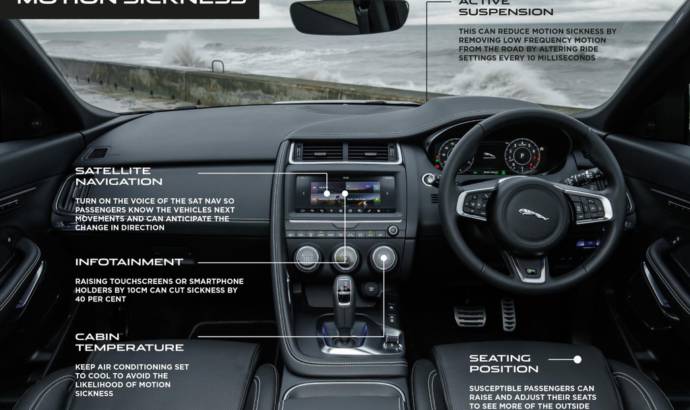Motion sickness is a problem everyone could have. Motion sickness affects over 70% of people. And the car can solve this problem in the future. For example, future Jaguar Land Rover vehicles will be able to tell if you’re feeling unwell and adjust settings to combat motion sickness.
Jaguar Land Rover has created an algorithm that generates a ‘wellness score’ for each passenger. This can be used to automatically personalise a vehicle’s driving and cabin settings to reduce the effects of feeling car sick by up to 60%.
Jaguar Land Rover has already collected 15,000 miles of motion sickness data and tested the effects caused by performing a task while in transit, such as checking emails. This has enabled the creation of a baseline driving style for self-driving vehicles to work towards, minimising the need for steering corrections and therefore the risk of motion sickness while passengers work or relax.
Motion sickness is often caused when the eyes observe information that is different from what is sensed by the inner ear, skin or body forces – commonly when reading.
The ‘wellness score’ calculates how susceptible individual drivers and passengers are to feeling car sick, using biometric sensors that record physiological signals. Combining this with motion and dynamics data, the vehicle will reliably know when a passenger or driver is becoming motion sick – before they do.
Jaguar or Land Rover vehicles today are already designed to help combat feelings of nausea. The Jaguar E-PACE, for example, has 26 different seat configurations for passengers to find a position that raises the infotainment screen relative to eye level as well as turn on the cooling seat function. Both factors have been proven to significantly reduce the likelihood of motion sickness. The E-PACE’s Adaptive Dynamics also remove low frequency motion from the road, which can lead to nausea, by altering the ride settings every 10-milliseconds to ensure passengers always experience high levels of comfort.



